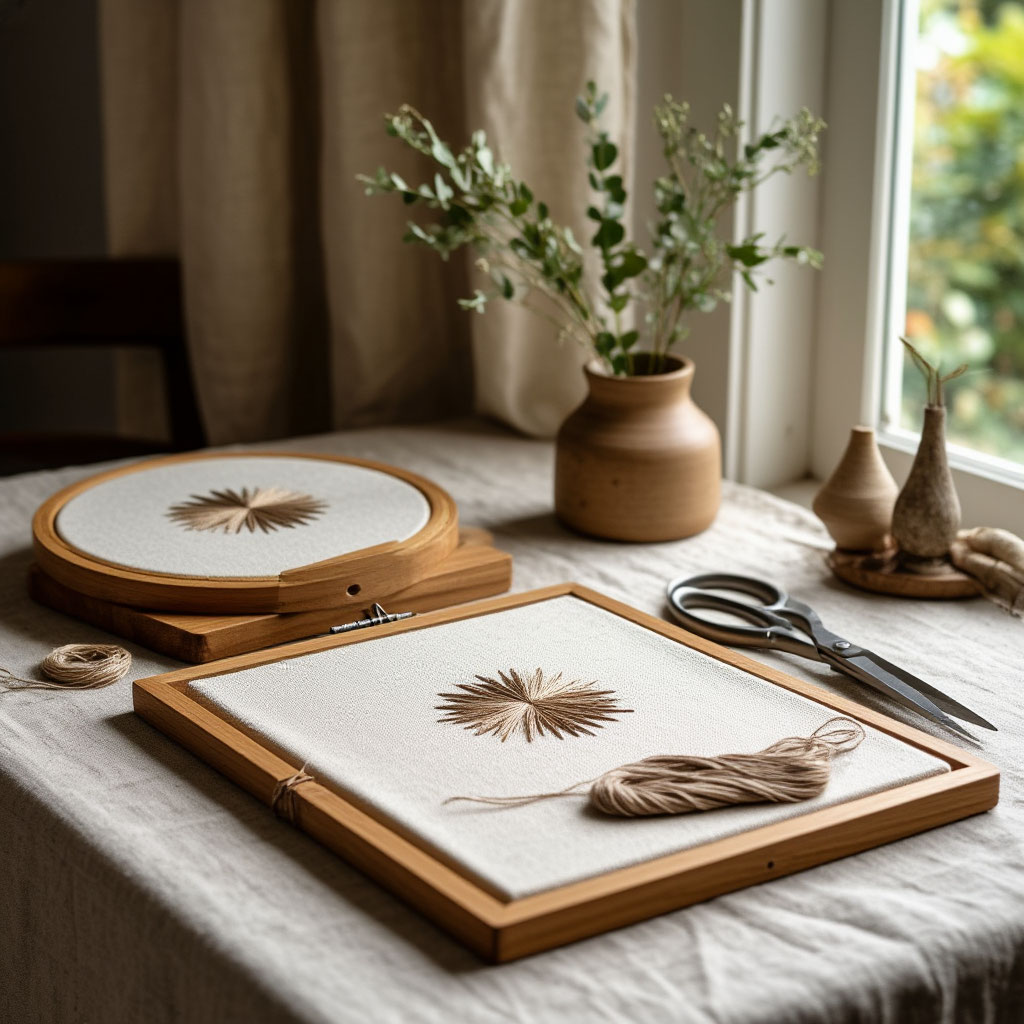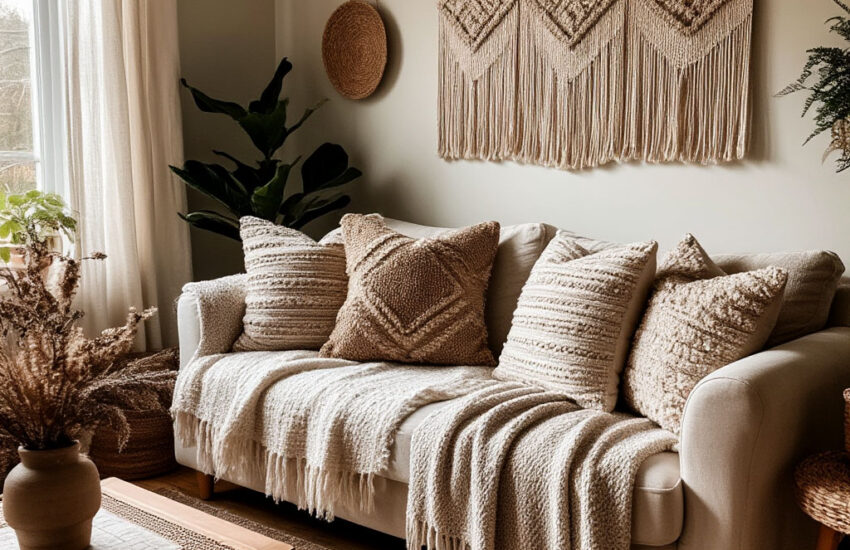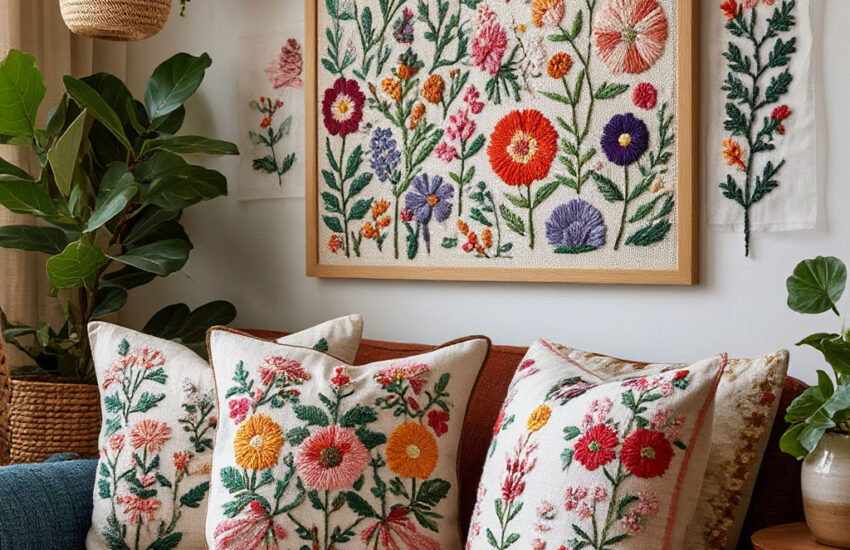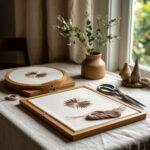Eco-Conscious Embroidery: Choosing the Right Tools and Threads
Contents
- 1 Why Sustainable Tools Matter for Embroidery
- 2 Top Eco-Friendly Threads for Home Decor
- 3 Must-Have Embroidery Equipment for Beginners and Pros
- 4 Setting Up an Eco-Friendly Embroidery Workspace
- 5 DIY Project — Eco Wall Hanging with Hemp Silk and Organic Fabric
- 6 FAQ
- 6.0.1 Is organic cotton thread strong enough for an embroidery machine?
- 6.0.2 Is bamboo embroidery thread actually eco-friendly or just rayon marketing?
- 6.0.3 Will hemp thread or linen feel scratchy or trigger skin allergies?
- 6.0.4 How do I wash eco-friendly embroidery without color bleed?
- 6.0.5 What’s a realistic U.S. budget for a sustainable embroidery starter kit?
Embroidery has always had a creative and calming appeal, but today’s stitchers are thinking beyond color and pattern. Many are now embracing eco-conscious embroidery tools as part of a larger effort to reduce waste and support responsible sourcing. This shift isn’t just about trends. It reflects real concern for how materials impact the environment.
Whether you’re making small hoop art or home textiles, using sustainable sewing materials and natural threads like hemp silk threads or organic cotton fabric brings a different kind of value to your work. Your hands may be shaping a beautiful design, but your choices are shaping a healthier planet. At the end of this article, you can download a practical checklist that will help you put the key ideas into action.
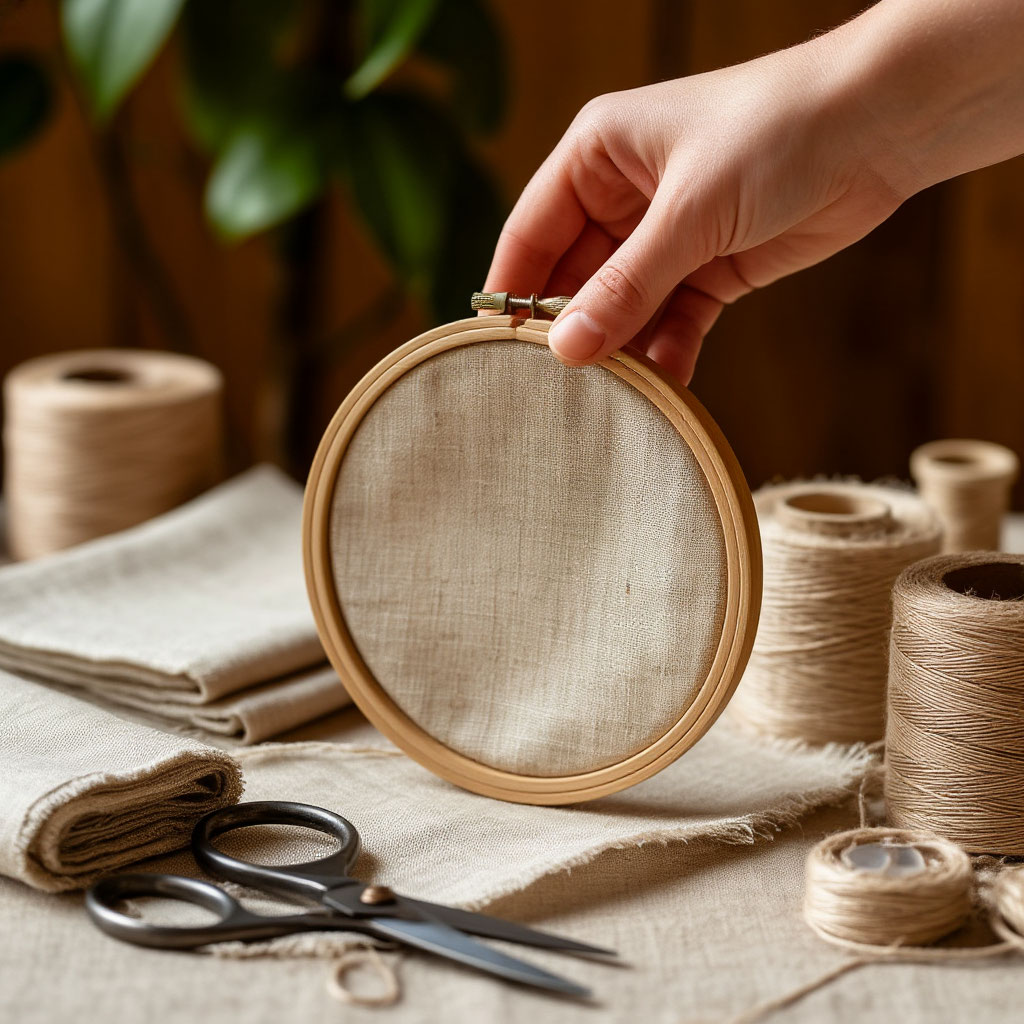
Why Sustainable Tools Matter for Embroidery
Using tools that last a long time means less plastic and fewer broken items tossed away. When you reach for wooden hoops instead of plastic, or stainless-steel scissors over cheap aluminum ones, you’re choosing things built to last. It’s not about perfection. It’s about starting somewhere. Even choosing organic cotton fabric for your background or hemp silk threads for texture can cut down on pollution and harsh chemical use. These sustainable sewing materials feel good to use and often look better over time. They age with grace.
Why Hemp and Organic Cotton Stand Out
Hemp is gaining traction because it grows fast and needs very little water. It also thrives without pesticides. This makes it an efficient crop that’s easy on soil. Hemp silk threads offer a soft sheen with a sturdy weave that won’t fray as easily as synthetics. Organic cotton is another favorite. It’s grown without genetically modified seeds or harmful sprays. That matters when you’re sewing something that sits close to skin or hangs in a shared space. Choosing these kinds of fibers means valuing comfort, health, and sustainability all at once.
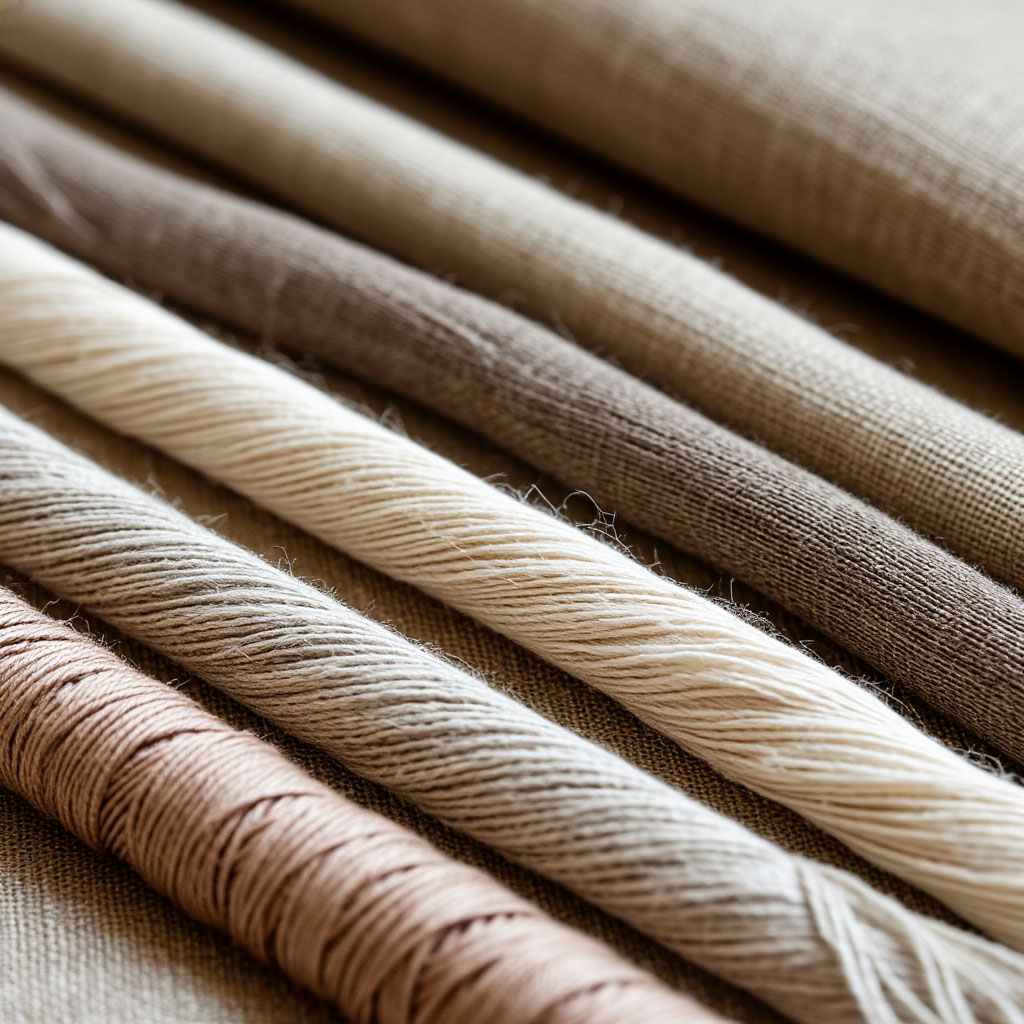
Top Eco-Friendly Threads for Home Decor
Picking threads for home textiles means thinking beyond just color. Texture, stretch, and source also matter. Different natural fibers have unique benefits. They work well in pillows, table runners, wall art, and even curtains. You don’t need a full redesign. One eco-aware project can change the feel of a room.
Linen threads are crisp and strong. They suit geometric designs and hold color well. Bamboo threads are naturally silky. They’re light and flexible. Organic cotton is soft, easy to dye, and works for most patterns. Hemp silk threads are textured with a soft sheen. They stand out in minimalist or rustic pieces.
Performance of Hemp Silk and Cotton in Decor
Many stitchers appreciate what hemp silk threads offer: a blend of beauty and strength. When used on organic cotton fabric, the finished design feels light and breathable. According to a1sewingmachine.com, hemp silk threads are especially effective in mixed-fiber decor where durability matters. Organic cotton fabric also resists fading, making it ideal for items like cushions or wall hangings that catch natural light.
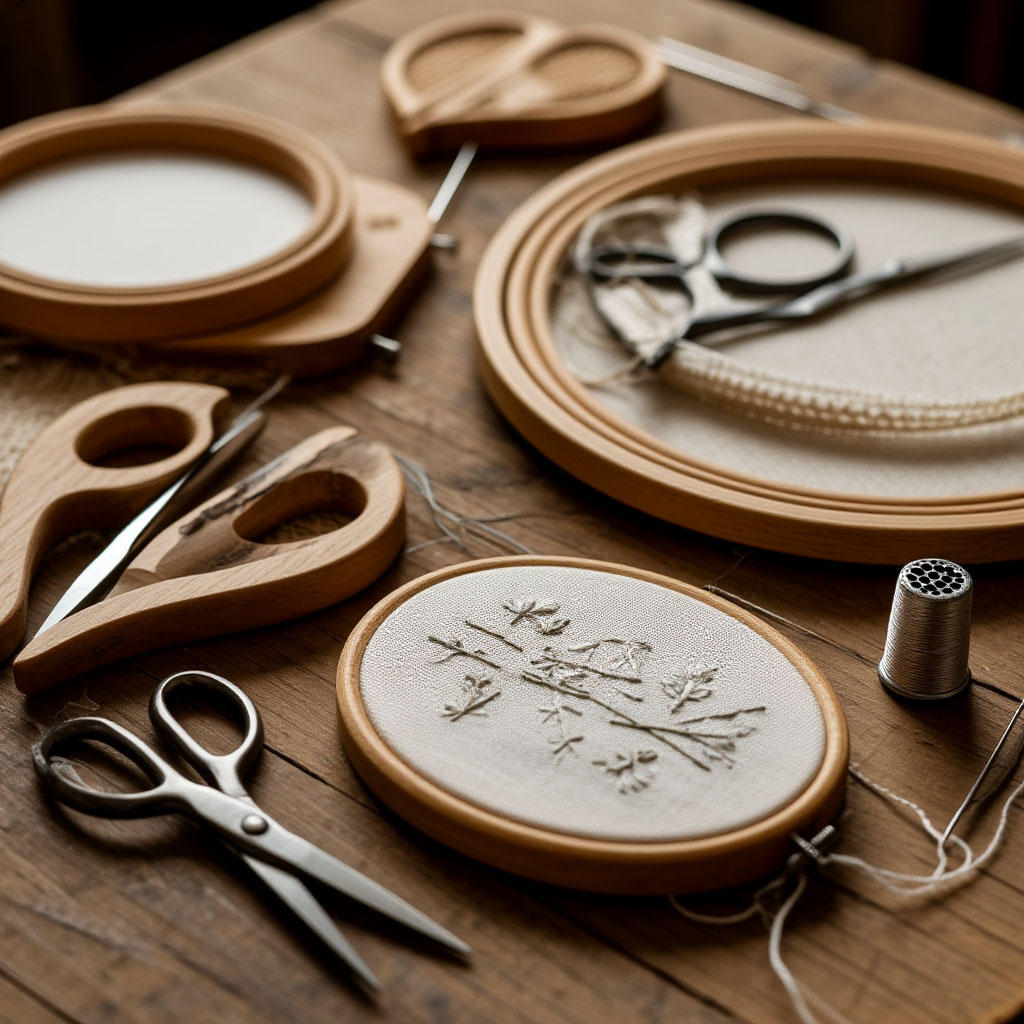
Must-Have Embroidery Equipment for Beginners and Pros
There’s gear that makes a difference whether you’ve just started or stitched for years. The right embroidery equipment can save time and reduce frustration. It can also help reduce waste over time.
| Tool | Why It Matters |
| Embroidery Hoops | Wooden hoops are sturdy and avoid plastic waste. They also keep tension better over long sessions. |
| Embroidery Needles | Quality needles last longer and don’t warp. They glide through tougher fabric with ease. |
| Thread Scissors | Stainless steel blades keep their edge. They handle fine threads without tugging or shredding. |
| Thimbles | Look for leather or metal. They’re reusable and often more comfortable than plastic. |
Looking to upgrade your kit? From quality embroidery hoops to precision scissors, investing in professional sewing equipment can elevate your stitches and overall experience. Sites like a1sewingmachine.com offer overviews of tools in their “Sewing Tools Every Beginner Needs” section. There, you’ll find a breakdown of professional sewing equipment that can grow with your skills.
Setting Up an Eco-Friendly Embroidery Workspace
Your setup matters. You don’t need a huge space to make it work. What counts is how the space supports comfort and flow. Try using soft, natural lighting or an LED lamp with low energy use. Avoid disposable organizers. Glass jars, wooden trays, or even upcycled containers keep everything in place without adding plastic. Recycled shelves can give tools a home without requiring new production.
Managing Waste and Supplies Mindfully
Waste management helps too. Keep a cloth bag nearby for thread clippings or fabric edges. Some makers compost natural threads like hemp silk or organic cotton trimmings. Consider using repurposed fabric for test stitches instead of new scraps. Label tools so you don’t replace what you already have. A bit of prep saves time and cuts down on overbuying.
Here’s how you can shape your embroidery workspace setup:
- Use jars instead of plastic bins for thread storage.
- Choose energy-efficient lighting and switch it off between sessions.
- Sort tools into wooden trays for easy access.
- Repurpose broken furniture into shelves or work surfaces.
- Keep a compost bin or fabric recycling box nearby.
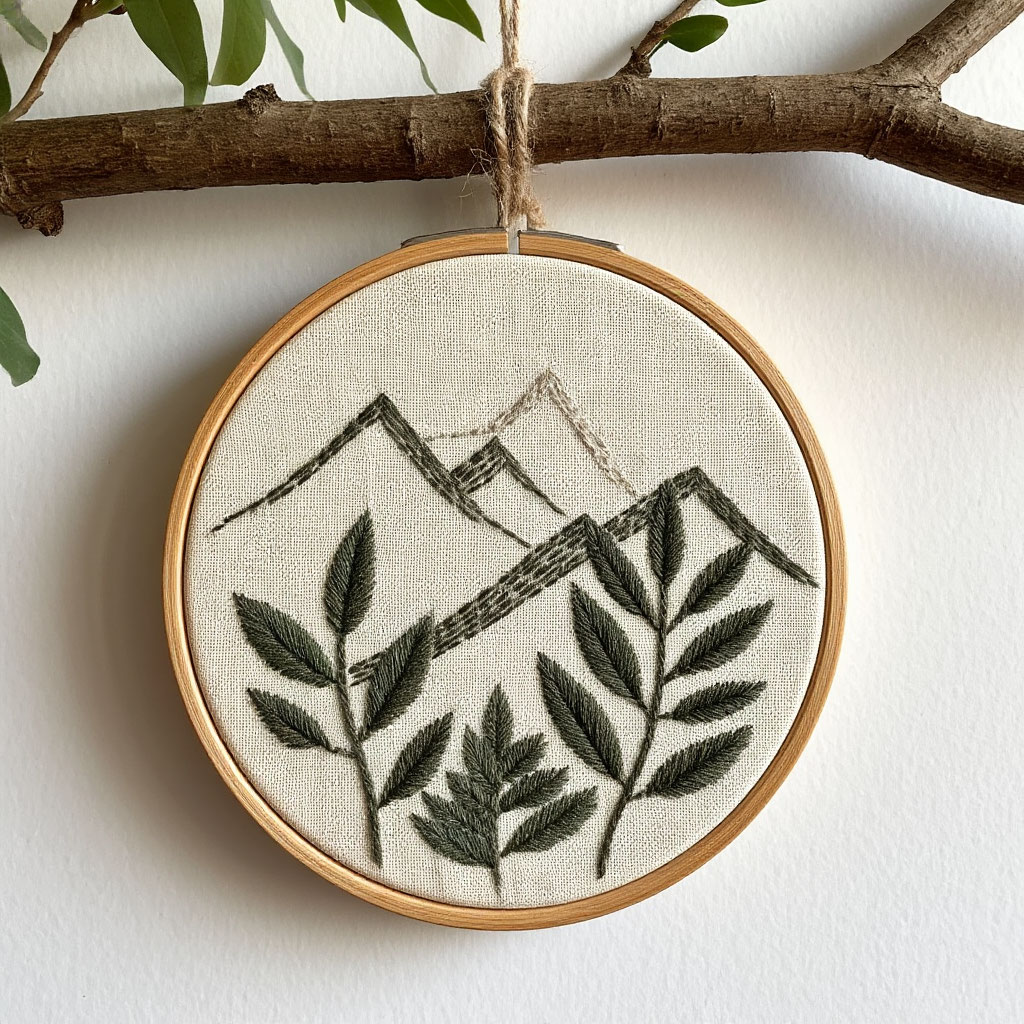
DIY Project — Eco Wall Hanging with Hemp Silk and Organic Fabric
If you’re aiming for something personal and planet-friendly, a wall hanging makes sense. It’s visible, useful, and a chance to try new fibers. For the base, organic cotton fabric gives a clean, soft background. Sketch out a natural design—leaves, branches, or mountain lines often work well. Use hemp silk threads to add contrast and texture. Their soft gloss catches light without overwhelming the piece.
Building the Piece Step by Step
Start by stretching the organic cotton fabric in a wooden hoop. Then:
- Trace your design with a fabric-safe pencil.
- Then stitch slowly, carefully layering the hemp silk threads.
- Mix the textures using a split stitch, backstitch, or chain stitch.
- When finished, pin the back and remove it from the hoop.
Hook it onto a wooden dowel or small branch. This will add an extra natural touch that will complete the project.
Think of this piece as a way to reflect your values. It’s not about perfection. It’s about doing it with care, using eco-friendly embroidery tools, and creating something you’ll want to keep.
This concise guide to eco-conscious embroidery tools shows practical thread and supply choices to cut waste and avoid toxins. Great for beginners and machine users.
FAQ
Is organic cotton thread strong enough for an embroidery machine?
Yes. Use a fresh 75/11 or 80/12 needle, lower top tension slightly, and keep speed moderate. Wind bobbins evenly. Test on scraps before the real piece.
Is bamboo embroidery thread actually eco-friendly or just rayon marketing?
No, most “bamboo” thread is rayon/viscose. Prefer lyocell-based bamboo or clearly labeled organic cotton, linen, or hemp. Check for GOTS or OEKO-TEX on packaging.
Will hemp thread or linen feel scratchy or trigger skin allergies?
Usually no. Both soften after a gentle wash and dry. Prewash threads/fabric and choose undyed or low-impact dyes. Look for OEKO-TEX certification to reduce risks.
How do I wash eco-friendly embroidery without color bleed?
Wash cold (≤86°F / 30°C) with pH-neutral detergent on gentle. Put the piece in a mesh bag and air-dry flat. Prewash fabric/threads and always do a swatch test.
What’s a realistic U.S. budget for a sustainable embroidery starter kit?
Plan about $25–$60. Wooden hoop: $5–$12, organic cotton/hemp thread: $3–$6 per spool, quality needles: $3–$5, small stainless scissors: $10–$20. Reuse jars for storage.
Embroidery can be more than craft. When you choose eco-conscious embroidery tools, you’re building habits that respect the world around you. From sustainable sewing materials to the way you organize your workspace, these small choices add up. You’re not just decorating your home. You’re shaping your space with care. You don’t need to buy everything at once. Just swap one item, pick a natural thread, or store your tools with reuse in mind. Every stitch counts.
Now you can download a checklist designed to guide you through the process — a handy tool to apply these insights in practice.
